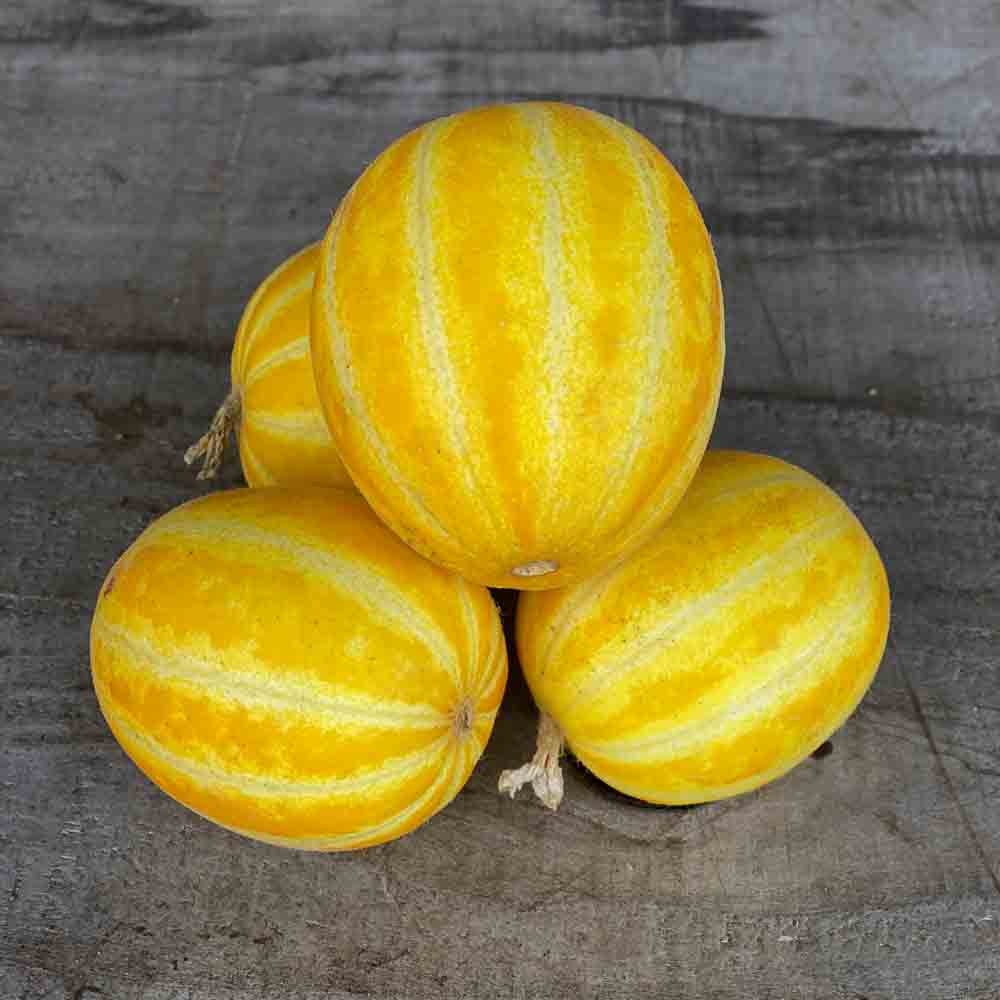MELON MANGO AB
Cucumis melo
The melon variety you mention appears to be an heirloom variety from China, often called Vine Peach . It was particularly popular in the United States in the 1880s for making fruit in syrup and pies. This melon produces fruit about 2 to 4 inches in diameter, with yellow skin and white flesh. Its flavor is similar to Honeydew with subtle hints of peach . It matures after about 70-80 days.
How to successfully sow melons
Sowing melons in pots
Melons require a high temperature (between 24 and 35°C) and plenty of light to germinate. The daytime temperature should remain within this range and not drop below 15°C at night. It is therefore best to sow in March/April , under a warm frame or in a heated greenhouse , and replant them in the garden after the risk of frost has passed (usually mid-May).
Sowing tips:
- Sow 2 to 3 seeds (point down) in each pot filled with fine seed compost to a depth of 1 cm.
- Water regularly, keeping the soil moist but not excessively so, using a sprayer.
- Place the pots near a window or in a very bright location. Once the seedlings have emerged, they will need even more light.
- Remove the weakest plants and keep only the most vigorous ones.
Melon sowing in place
If you live in the South of France or in a Mediterranean climate, you can sow directly into the ground. Sowing tips:
- Space the seeds 80 cm to 1 meter between each future melon plant.
- Plant 2 to 3 seeds per pocket 1.5 cm deep.
- Cover everything with a mixture of sifted garden soil and mature compost .
- Protect seedlings at the beginning with a cloche or a frame .
- Keep only the most beautiful plant for each pocket.
Melon planting
Young melon plants can be planted in the garden between April and mid-June. If you don't live in the south, a heated greenhouse is recommended for growing melons.
Tips for planting
- Space plants 80 cm to 1 meter apart.
- Melon prefers a warm , sunny location with rich, deep soil, particularly rich in potash .
- Loosen the soil a little before planting and incorporate a little compost.
Growing and caring for melons
Melons are easy to grow in the vegetable garden, but they don't mix well with cucumbers and squash . Modern melon varieties don't require pruning, except for topping (cutting off the head). When the plant has formed 4 to 6 leaves, prune the main stem to encourage good branching and fruiting. Other tips:
- Water regularly, but not excessively, to avoid a reduction in taste qualities.
- Avoid wetting the foliage when watering to prevent powdery mildew .
- After planting, weed and mulch when the soil is warm.
- Remove leaves that hide the fruit to allow them to receive maximum sunlight.
- Place boards or tiles under the fruit to protect it from soil moisture and increase heat.
Melon harvest
Melons are generally harvested 2 to 3 months after transplanting from the garden. A fully ripe melon generally has a lighter color, a stem that detaches easily, and a more pronounced aroma. Do not store it in the refrigerator, as this will alter its aroma. Fully ripe melons often have a small crack around the stem.
Melon diseases
Melon is susceptible to cucurbit mildew , leaf spot and powdery mildew . To prevent these diseases:
- Avoid watering the foliage, especially at the end of the day.
- At the end of the season, place tiles or boards under each fruit to protect them from humidity.
- Aphids and seedpod flies are the main pests. To avoid attacks, plant when temperatures are warm enough to allow rapid plant growth.
By following these tips, you should be able to successfully grow and harvest delicious Vine Peach melons (yellow melon with white flesh) at home.









